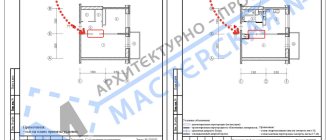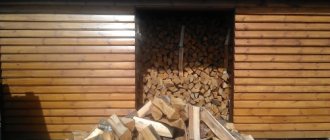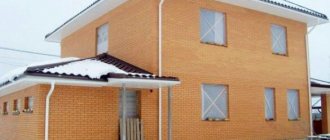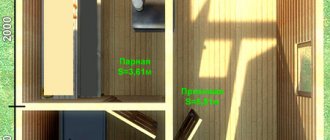Threaded connections are present in all machines, tractors and other mechanisms. They are used when parts must be detachable. This is very convenient and allows you to quickly replace what is broken. But sometimes it happens that the screw cannot be unscrewed, it is impossible to remove a stuck pin, or the head of the bolt has been licked off. How to unscrew a screw with a broken head? How to get a broken pin? How to unscrew a crimp in a hard-to-reach place?
We’ll talk about how to unscrew a broken, broken or licked bolt or screw later in the article.
Why the screw does not come out: the main reasons for souring of bolts and stripping of threads
Every driver or auto mechanic faces the problem of how to unscrew a bolt with a torn head, a hexagon with torn edges, or a broken fitting. When operating cars, tractors and other special equipment, threaded connections often come into contact with oily or caustic liquids, become clogged with dirt and experience increased stress when the loads are exceeded. All this negatively affects the strength of bolts and studs.
It is imperative to unscrew the hexagon with the broken head. If this is not done, you will not be able to install the new part using standard connections. And drilling nearby will reduce the strength of the spare parts and compromise the integrity of the structure.
To prevent the appearance of broken studs and bolts with a torn head, it is important to carefully inspect the condition of the threaded connections during each maintenance and replacement of parts. If defective ones are found (with traces of corrosion, sagging, torn threads or licked hexagon faces), they must be replaced with new ones. This will help maintain the quality and strength of the connections.
But problems can arise even with proper and regular maintenance. The main reasons why it is difficult to unscrew a bolt with a broken head are the following:
- natural metal fatigue that occurs under constant stress during operation;
- contact with technical liquids (diesel fuel, oil, antifreeze, etc.);
- violation of the protective layer of fasteners, resulting in rust or corrosion processes;
- loss of metal strength as a result of constant overheating;
- fasteners that are too tight;
- manufacturing defects.
But whatever the reasons, it is important to know how to unscrew a screw with licked edges, a torn head or rust, as well as how to carefully remove the crook of the bolt. Let us further consider in detail with photos special cases and propose the optimal method for each situation.
Why shear bolts fail and how to repair them
The main reason for shear bolt failure is the operator himself. He inattentively studies the surface being removed, does not know it well, or simply ignores the basic rules for operating a snow blower.
There is always a possibility that some metal object remains under the snow, hard ice has formed, there are stones, remains of bricks, and so on. When hitting such objects, the shear bolts immediately act as a fuse. To continue using the snow blower, you will first have to replace the old consumables. This is due to the fact that without a complete shear bolt, the rotation process of the auger mechanism is blocked. This is necessary in order to prevent the development of more serious damage and problems with the equipment.
To prevent such situations from occurring, or at least to minimize the number of shear bolt trips, before starting work, you should check the surface for the presence of any hard objects under the snow. Moreover, such a recommendation must be written in all operating instructions for absolutely every snow removal unit. Therefore, it will not be superfluous to study the instructions in detail and only then start working.
It is a mistake and naive to believe that shear bolts that have worked during a collision with an obstacle can be restored. No, they cannot be repaired. The only option in such a situation is to replace the consumable with a new element.
One more thing. For each shear bolt, the owner of the snow blower will have to pay at least 100 rubles. If you ignore the rules of operation and handling of snow removal equipment, replacing shear bolts can be a frequent procedure. And this will cause a significant blow to the budget.
A universal algorithm for unscrewing a broken pin
| If the threaded part sticks out | Screw on two nuts. Unscrew the stud by grasping the bottom nut with a wrench. |
| Screw on one nut and weld it to the stud. Remove the fastener by grasping the nut with a wrench. | |
| If the smooth part sticks out or the thread is broken | Fit the nut and weld it to the protruding part of the stud. When the metal has cooled, unscrew it using a wrench. |
| If the pin breaks off with a protrusion, place a thick screwdriver at its base and hit it with a hammer in the direction of unscrewing. | |
| Use a chisel to knock out a groove at the end of the broken stud and unscrew the fastener with a flat-head screwdriver. | |
| Use a pin driver. | |
| If the head of the bolt is torn off or the stud breaks off flush | Use a chisel to knock out a groove at the end of the broken stud and unscrew the fastener with a flat-head screwdriver. |
| Semi-automatically weld the protrusion and then weld a nut or rod to it, which will make it easy to unscrew the stud. | |
| Drill out the crease. Drill along the entire length, gradually increasing the diameter of the drill. The remnants of the thread are removed with needle-nose pliers, having first been sprayed with a wedash. | |
| Use an extractor or TORX. |
Folk remedies for cleaning rust from tools
You can remove rust from metal keys with simple homemade solutions. The following substances are suitable for removing signs of corrosion:
- Table vinegar . Water and acid are mixed in a container in a 1:1 ratio. The instrument is immersed in the liquid for several hours, then the objects are taken out and thoroughly wiped with a dry cloth or rag. Remains of rust are removed with a hard sponge.
- Lemon juice . An effective product that helps dissolve rust that has formed on bolts or other small metal products. The liquid is diluted in equal proportions with water. Instruments are soaked in the mixture for 3-4 hours. If there is no juice, it can be replaced with citric acid.
- Soda . A small amount of water is added to the powder. The resulting slurry is applied to the surface affected by rust and rubbed in with a metal brush. Then the instruments are washed with running water and dried.
- Coca Cola . Helps easily get rid of rust that appears on tools. Objects damaged by corrosion are placed in the liquid and left for several hours, then washed well.
If after using any of the traditional methods there are traces of rust, they must be removed with a stiff brush. Upon completion of treatment with liquid compounds, the instruments must be wiped dry.
A universal algorithm for unscrewing a bolt with a damaged head
The mechanics of how to unscrew a bolt if the head is broken will be similar to the situation with unscrewing a stud. You can unscrew a bolt without a head using one of the methods described above.
Tips on how to unscrew a bolt if the head has been licked are briefly given in the table.
| If the edges of the bolt are licked (not too much) | Use a file to sharpen the edges and unscrew the bolt with a wrench. |
| Place a 6- or 12-point socket under the socket wrench and unscrew the bolt with the wrench. | |
| Weld a nut whose inner diameter corresponds to the outer diameter of the bolt head. Unscrew using a wrench. | |
| Use a chisel to make a groove along the diameter of the bolt head, and unscrew it with a screwdriver. | |
| If the bolt head is torn off or severely damaged | Cut off the head with a grinder, unscrew the rest of the fasteners using one of the methods for studs. |
| If a bolt with a broken head has a protrusion, place a thick screwdriver at its base and hit it with a hammer in the direction of unscrewing. | |
| Use an extractor or a suitable sprocket. |
Hammer and chisel
You can use a hammer and chisel to loosen the bolt.
It is necessary to install the chisel on the edge of the bolt head at an angle. It is necessary to direct the tip of the chisel in the direction of unscrewing the bolt and give a strong blow to the chisel with a hammer.
In this way, you can unscrew almost any rusty bolt. Alternatively, hit the key, but without applying much force. If the “culprit” does not unscrew, there is a chance that you can “lick” the edges of the bolt with the key.
How to remove a stud from an engine block
Scheduled replacement of cylinder head studs
It is recommended to replace the cylinder head studs at the same time. By installing fasteners from the same batch, we ensure that all studs have similar characteristics. Accordingly, the load will be distributed evenly, and this will increase the service life of the unit.
Before unscrewing the stud from the engine block, thoroughly moisten the joints with WD-40. If you don't have it on hand, kerosene or brake fluid will do. You need to unscrew the bolts with a special wrench, but if you don’t have one, you can unscrew the stud from the aluminum block with a gas wrench.
Important: you should not sharply pull or yank the key - this is a sure step towards the appearance of a breakage.
If you fail to unscrew the stud from the aluminum engine block the first time, you need to re-apply technical fluid to the connections - it’s better to find WD-40. After 10-15 minutes you can try again.
To make removing the cylinder head studs easier next time, lubricate each one with graphite lubricant before installation. When tightening, use a torque wrench and ensure that the torque does not exceed the recommended values.
If you follow these recommendations, unscrewing the stud from the cylinder head next time will not be difficult. But what to do if last time you were not so prudent or others did the repairs?
How to remove a broken bolt from an engine block
It is often not possible to avoid broken studs from the engine block even with careful attempts to remove the fasteners - metal fatigue and manufacturing defects have not been canceled. The situation is unpleasant, but there are ways to fix everything and still unscrew the broken bolt from the engine block. Let's look at the simplest and most effective methods.
If a fragment of a pin remains sticking out
To unscrew a broken pin from the engine block, proceed as follows:
- Place a nut on the stud piece (a slightly larger diameter is needed) and weld it to form a bolt. After this, you can easily unscrew the aluminum stud with a regular spanner.
- A piece of reinforcement is welded to a broken bolt in the aluminum engine block. The longer it is, the larger the shoulder will be, which means it will be easier to unscrew the pin. It is optimal to take a 35 cm piece of reinforcement. Next, unscrew the structure like a regular screw.
- If the broken bolt from the block head is of sufficient height, it can be sharpened with a file to make it square. After this, unscrew the bolt using a tap wrench.
If the cylinder head stud breaks flush
To unscrew a bolt from the engine block that has broken flush with the surface, you will have to drill it out.
- Wrap the cylinder block with thick cloth to prevent soot and fumes from getting inside.
- Sand the crease with a grinder with an abrasive attachment to remove chips and protrusions.
- Make a small hole in the center of the cylinder pin.
- Drill out the stud to its full depth using a smaller drill bit. It is very important that the drill does not deviate from the vertical and does not go to the side. To do this, the cylinder head block must be placed or fixed.
- Restore the thread for the cylinder head stud using standard taps of the appropriate diameter.
If it was not possible to unscrew the broken aluminum cylinder head bolt, you will have to install a new stud of a larger diameter. To do this, a hole is drilled in the place of the crease for a new pin. After drilling, you need to cut the thread, this is done using a tap of a suitable size. A cylinder head stud with a diameter larger than the standard one is screwed into the prepared hole. Accordingly, it will require a new nut.
How to remove rust: 9 ways
Rust always causes distress when it appears. You can find it anywhere - on any metal, on tiles, on clothes, on porcelain, on plumbing fixtures, on dishes, on decorative items and much more. On the household chemicals market you can find various products that help fight such difficult-to-remove stains, but you can also use what you have on hand. On the website Eliminate.ru you can find non-hazardous, environmentally friendly and fairly simple home remedies to help remove rust .
How to remove rust - home remedies
I would like to emphasize that when using any of these products, you should not increase the exposure time on the stain. This may result in damage to the product. And after treatment, it is important to rinse and wipe dry the exposed surface - this will prevent rust from reappearing.
How to remove a stud from an exhaust manifold
The exhaust manifold causes the most problems with soured and broken studs. The fasteners here are exposed to temperature changes, soot, fumes and dirt get into the joints - and these are the right conditions for the appearance of stuck nuts and brittle bolts.
If the stud and nut have become sour and cannot be unscrewed
Upon visual inspection, it may seem that the nuts are tightly soured - this is due to the adhesion of dirt and soot. Inside, the thread may be intact and quite amenable to unscrewing.
If you cannot immediately unscrew the pin from the exhaust manifold, proceed as follows:
- Treat the connections with WD-40, wait 10-15 minutes and try to unscrew the nut from the stud again. If it doesn’t work, repeat the steps described. Sometimes you need to handle it with a wedge several times to get the nut to give way. Before repeated treatments, you can carefully clean the joints with a brush with metal bristles.
- If you cannot release the exhaust manifold stud, you can heat the nut with a torch. But before unscrewing, you need to let the metal cool completely.
- If the nuts do not budge, they can be cut off with a grinder or split with a chisel.
Usually, after this, unscrewing the studs from the exhaust manifold will not be difficult, since soot and fumes rarely get under the nuts. But if the fasteners have stood for a long time, then the metal may burst due to temperature exposure.
How to remove a broken pin from an exhaust manifold
Use the following tips to quickly remove a broken exhaust manifold stud:
- Grind the crease with a grinder with an abrasive disc to remove any unevenness. Use a chisel to hammer into the deep groove and unscrew the broken pin from the exhaust manifold using a flat-head screwdriver.
- Weld a nut onto the broken stud, wait until it cools completely and then unscrew it using a wrench. The method is suitable even when the fastening has broken off flush, since welding will not take hold of the aluminum base.
- If all else fails, you can remove the broken stud from the exhaust manifold with good old fashioned drilling. Using a file or a grinder, cut off the unevenness from the crease so that you get a more or less flat area. Mark the hole exactly in the center and drill to the full depth, first with a thin drill (you can take a two-piece), and then with a thicker one (3.5). Treat the remains of the broken pin with WD-40 and unscrew it, helping yourself with pliers or needle-nose pliers. To restore the thread, you need to go through the appropriate tap.
Preventing rust
High humidity, temperature changes, and aggressive environmental influences always lead to the formation of corrosion on metal products. For prevention, you must adhere to several rules:
- The instrument should be wiped down after each use. Shovels, rakes and other gardening tools should be cleaned with solvent or kerosene to completely remove residues and plant juices.
- Regularly treat metal objects with special compounds that prevent corrosion.
- Periodically carefully inspect all instruments for damage. Replace damaged parts immediately. At the first sign of rusting, take action immediately.
Particular attention should be paid to those places that are located near the fasteners or blades. They must be cleaned with a stiff wire brush and plain water.
There is no need to throw away an old tool that is covered in rust. There are special products on sale that can restore it to its original appearance and eliminate signs of corrosion. For this purpose, you can also use substances that are always at hand. Getting rid of rust will not take much time, and the service life of the tools will be significantly extended.
How to unscrew a stud or bolt on a wheel
Car owners and tractor drivers get into a lot of trouble when they need to unscrew a pin or bolt from a wheel hub. There are several mechanics for fastening wheels, and they all require strict adherence to manufacturers' recommendations (withstand a certain force, center the disk, use spacer rings, etc.). Otherwise, the load is unevenly distributed across the wheel mounts with all the ensuing consequences.
There are no particular differences in how to unscrew a wheel stud or bolt. The only thing is that before unscrewing the studs you must first remove the nuts. If they become stuck, it is enough to treat them 1-2 times with WD-40. There are usually no particular difficulties with them: although they look “scary”, in the sense that they are covered with dirt, they unscrew without problems. But then the fun begins.
Studs and bolts very often crack and break off. To unscrew a broken stud from a hub on a passenger car, proceed as follows:
- Remove the wheel and brake discs.
- If the broken bolt from the wheel hub is too long and, when knocked out, will rest against the steering knuckle, you can file it or grind off the interfering edge with a file.
- After all the preparations, the licked wheel bolt is knocked out with a hammer.
If a wheel stud is damaged, it must be replaced immediately, since a bent mount cannot support the designed loads. It is also advisable, when replacing, to immediately unscrew all the studs from the hub and replace them with new ones - hardware from the same batch will distribute the load as evenly as possible.
To unscrew a broken stud or bolt from a wheel hub on a tractor, truck, or in particularly severe cases on a passenger car, you can use one of the following methods:
- Unscrew the wheel bolt or stud using a meat grinder. This is a special gear wrench that serves to increase torque. Even the tightest fasteners, from which ordinary keys bend, can be easily unscrewed with a meat grinder. It can be used to install heads for nuts and bolts of different sizes.
- If there are no special tools, then in order to unscrew a bolt or stud from the wheel hub, you must first loosen the fasteners. To do this, you need to treat the connection with WD-40. If the Vedashka does not help, you can treat the sour areas several times with vinegar essence or a rust converter.
- In some cases, the fasteners must be additionally heated. A torch or blowtorch is suitable for this. Hot metal is cooled by cold water. After this you can start twisting.
- To increase the leverage and make it easier to unscrew a stud or bolt from the wheel hub, insert a crowbar into the key and use it as a handle.
How and with what to properly clean metal tools
Tools damaged by rust cannot be used.
For large objects, a mechanical method is used, for example, sandpaper, a wire brush, a scraper or sandblasting.
This processing method is not suitable for small parts. In these cases, it is recommended to use store-bought cleaning products and folk recipes. Special compounds allow you to remove plaque without damaging the surface.
Before you clean rust on metal, you should prepare your tools for processing. If they are severely damaged by corrosion, you will need a steel wool brush for the procedure. For deep damage over a large area, it is recommended to use an electric grinder.
Metal cleaning devices require the use of physical force. In this case, care must be taken not to damage the surface structure. At the end of the work, you need to sand the tools with sandpaper to remove any traces of scratches.
How to unscrew a bolt in a hard-to-reach place
To unscrew a bolt in a hard-to-reach place, you can use a mini-driver. This is a compact induction device that can be used to heat nuts, studs and bolts. Thanks to the long and thin nozzles, you can use a mini-ductor to get into the most inaccessible places to loosen soured fasteners and unscrew the bolt more easily.
The following technique can be used to remove a broken bolt or stud from a hard to reach area. If the fastener does not break off flush and the crease protrudes by at least 2-3 mm, then you need to screw a suitable nut onto it and weld it. Once the metal has cooled, using a wrench or a socket with a wrench, you can unscrew the broken bolt.
If the crease of a bolt in a hard-to-reach place breaks off flush with the surface, then first it must be extended. To do this, a “slide” is welded using a semi-automatic welding machine. If you can’t clamp this build-up with pliers and unscrew it, then you can, as in the previous case, weld a nut onto the protrusion and then unscrew the broken bolt using a spanner.
If the methods described above fail to unscrew the crook in a hard-to-reach place, the part will have to be removed and then drilled out the broken bolt.
Here are 6 best ways
Rust can be one of the most annoying things on items around the house or on the toolbox we keep in the garage. Since rust is so widespread, there are many ways to remove oxidized iron with a little effort. This does not remove pitting, but it does remove all rust from the metal object so it can live another day. Check out our list of the best rust removal methods!
White vinegar
Most of us probably have some white vinegar on hand, whether for cooking or cleaning, and it turns out to be one of the most effective chemicals for removing rust. All you have to do is soak the rusty item in vinegar for 24 hours. When you take it off, give it a rub and it should be rust free! If for some reason the rusty item is too large to fit in the vinegar container, you can soak a rag in the chemical and rub the rusty item.
Lime and salt
If you don't have white vinegar, but do have table salt and a lemon or lime, then you have everything you need to make this tool sparkle. Simply sprinkle the metal generously with salt, then squeeze the lime or lemon juice over the salt. You can use the peel to rub off the rust by leaving it on for 2-3 hours.
Baking soda
All you need for this method is baking soda and water. Pour the baking soda into a bowl and slowly mix with the water until the mixture begins to form a sticky paste. When the paste is ready, spread it over the metal and let it sit for a while. Once you decide enough time has passed, scrub off the paste with a toothbrush or steel wool. The rust will come off along with the paste.
Potato and dish soap
Perhaps the most surprising rust remover on this list, potatoes and dish soap work great at removing rust. This method works best on flat metal pieces, as the sliced potatoes will lie on the object. First, cut the potatoes in half, then coat the cut ends with dish soap, any kind will do. This starts a chemical reaction that binds to rust. You can rub the potato over the item if you're feeling impatient, or leave it there for a while to let it soak in.
Lemon acid
You can buy powdered citric acid in the supermarket and all you have to do is mix some with hot water. You can make as much solution as you need in a bowl and then place the rusty metal in the container. If you leave the item in the solution overnight, by the morning it should be virtually rust-free!
Diesel
Diesel fuel actually works as well as all the other methods on this list. Allow any rusty old item to soak in diesel fuel for 24 hours and the rust will slowly begin to wear off. Once you remove it, be sure to wipe it down and rinse it thoroughly to drain all the fuel.
Do you have another rust removal method that has worked for you? Let us know in the comments so everyone can clean those old rusty items until they shine.
Written by Trevor English
.
How to unscrew a rusty screw or stuck hairpin
How to unscrew a screw if it is rusty? This task may not be as simple as it might seem at first glance. Especially when it comes to threaded connections that have not been touched for decades. And if the car or tractor has been outside all this time, problems with rust cannot be avoided.
To unscrew a rusty or stuck stud, proceed as follows:
- Treat the joint with WD-40 every 10-15 minutes, working the screw with a wire brush before each application.
- In case of strong sticking, you can use a rust converter or vinegar essence.
- If the stuck pin still does not give in, the connection is heated. To do this, use a blowtorch, gas torch or mini-inducer. In a hot state, it is better not to unscrew a rusty screw, but first cool it (you can pour cold water on it). If the pin still does not give in, you can unscrew it hot, but in this case there is a high probability of damage.
Why does rust form?
Any environment is considered aggressive for unprotected metal. For this reason, its surface layer is constantly exposed to all sorts of chemical reactions. Subsequently, rust stains appear, the appearance of the product is lost, and its strength characteristics deteriorate.
In addition, iron devices that are constantly exposed to excessive temperatures suffer from corrosion: engine components, furnace fittings, turbine blades. Metal bases that are in prolonged contact with various liquids (water, alcohol) are also susceptible to corrosion.
Objects that remain in water for a long time are most susceptible to corrosion. Source jaspowdercoating.com
How to unscrew a broken hex bolt
Hex sockets are often used to fasten automotive and tractor parts. And, of course, they can also sour and break off. But most often problems are caused by a licked hexagon with knocked down edges - it is impossible to unscrew it using standard keys. Let's figure out what to do in this situation.
How to unscrew a licked hex bolt with knocked down outer edges
If the hexagon is licked from the outside, you can unscrew it in the following ways:
- Use a file to re-file the edges, reducing the size of the bolt head, and then use a standard spanner with a suitable head.
- Place the head of a 12-point spanner onto the licked hexagon. The diameter of the nozzle must be equal to the outer diameter of the hex bolt. After hammering the head, use a spanner to unscrew the hexagon. After this, remove the head and knock out the broken hexagon from the reverse side with a hammer.
- Another way to unscrew a hex screw with stripped outer edges is to use asterisks (torx). But you can hammer in the sprocket only if the bolt has not “boiled”, otherwise you can easily break it off and get even more problems.
How to unscrew an internal hexagon with licked edges
The easiest way to unscrew an internal hex bolt is to use TORX sprockets. You need to take a torx with a diameter slightly larger than the dimensions of the internal hexagon. Taking into account the licked edges, they will fit each other just right.
To unscrew a screw with torn edges, hammer the sprocket to the limit with a hammer. After that, just unscrew it with a key. The method is only suitable for hexagons made of relatively soft metal - the sprocket will simply break on high-strength hardened steel, and then you will have to drill out tool steel.
It is much easier and safer to use a 12-point socket from a spanner wrench that is the size of the outer diameter of the hexagon. It needs to be pressed onto the hexagon socket bolt and then unscrewed using a spanner.
If you don’t have TORX sprockets at hand, but you need to unscrew an internal hexagon with licked edges that goes flush with the surface of the part, you can use welding. A semi-automatic machine welds a “hill” onto the bolt head, to which a nut or rod is then welded. If you have welded a nut, you can unscrew the bolt with a licked internal hexagon with a wrench; if it is a rod, then unscrew it using force.
A slightly more labor-intensive, but still workable way to unscrew the bolt under the internal licked hexagon, if it protrudes above the surface, is to cut off the head to make a stud. If it has not soured, it can be easily removed with an extractor. If it becomes sour, treat it with WD-40 and, as a last resort, drill it out.
How to unscrew a hexagon without a key
Well, to top it off, a little trick on how to unscrew a hex bolt without a hex key. To do this, you will need a thick long pin and two nuts that fit it. The nuts need to be screwed onto the stud at a distance from each other and the hex head should be fixed between them. By tightening the nuts to the hex head, you can unscrew it without a key.
Another trick on how to unscrew a hexagon without a hexagon is as follows. Use a chisel to make a deep cut in the head of the bolt. Next, hit the chisel with a hammer in the direction of unscrewing the hexagon. It should move, and then you can try to unscrew it by hand.
Rust solvents for metal products
Treatment with rust solvents allows the tool to return to its original appearance.
Various types of chemicals are used to clean iron objects. Rust solvents are made from acid, zinc oxide or plant components. To get your tools in order, you can try Syntilor Ruggine, Sonax, Liqui, Wurth, etc.
Such products are harmful to the skin, so work should be carried out with protective gloves.
When using chemical compounds, you should adhere to safety precautions:
- Strictly follow the manufacturer's instructions for using the substance.
- Wait the right time for the product to react with the corrosion, and then clean the product.
- Make sure that the drug does not come into contact with the skin and mucous membranes.
- Use solvents only for small items.
Products based on tannins and additives are considered safe, since they do not contain toxic compounds.
Chemical zinc solvents are widely used in the automotive industry. They are also used to prevent corrosion.
What is a nut and bolt?
Let's start with the theory and remember what a nut and bolt are, as well as what functions they perform:
- A bolt is a rod made of metal and having a square or hexagonal head, as well as a thread intended for screwing on a nut. Today there are many types of bolts, the design and shape of which depends on the purpose. Here it is worth highlighting anchor, hinged or eye bolts, bolts with a countersunk or semicircular head.
- A nut is a fastening element that has a hole with a thread cut inside. As a rule, nuts are hexagonal in shape and can be unscrewed with a wrench. But there are other versions of products - round with a notch, with a protrusion and others.
Tools for removing rusted nuts and bolts
Using force is not the best method in dealing with “stuck” fasteners. Most often, you can cope in simpler ways - with the help of special means.
Here are the most popular options:
- WD-40 is a classic lubricant for car owners for all occasions.
- Flammable liquids - kerosene, turpentine, diesel fuel or gasoline. It is not always possible to unscrew a rusted bolt or nut using such compounds, but you should try.
- Acid. If you have a weak acid on hand, use it. The point is that the working fluid dissolves metal oxides.
- Coca Cola. If nothing is found from the above list, you can use the drink Coca-Cola, beloved by many. Its peculiarity is the presence of orthophosphoric acid in its composition, which effectively copes with oxidative processes.
What is strictly forbidden to do (use of force)?
The main mistake of many beginners is a thoughtless approach to twisting and the use of “force” methods.
Remember, in order to unscrew a stuck element, it is important to be patient and not rush. Solving the problem requires a consistent and measured approach.
Haste in resolving an issue can cause many problems.
Thus, car owners often rush to unscrew a rusty bolt and tear off its upper part.
The result is drilling out the broken product, which will take a lot more time.
In addition, the result of haste may be damage to nearby nodes with the key, which will lead to the need for additional investments.
Before starting work, draw up an action plan, and then begin to implement it.
If you work in a hurry, the total cost of time and money may be higher. Moreover, there are enough methods to quickly unscrew a rusted nut or bolt. We will talk about them below.











